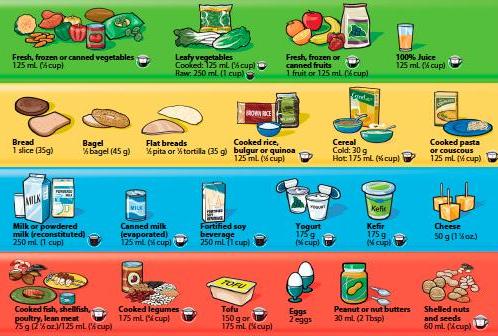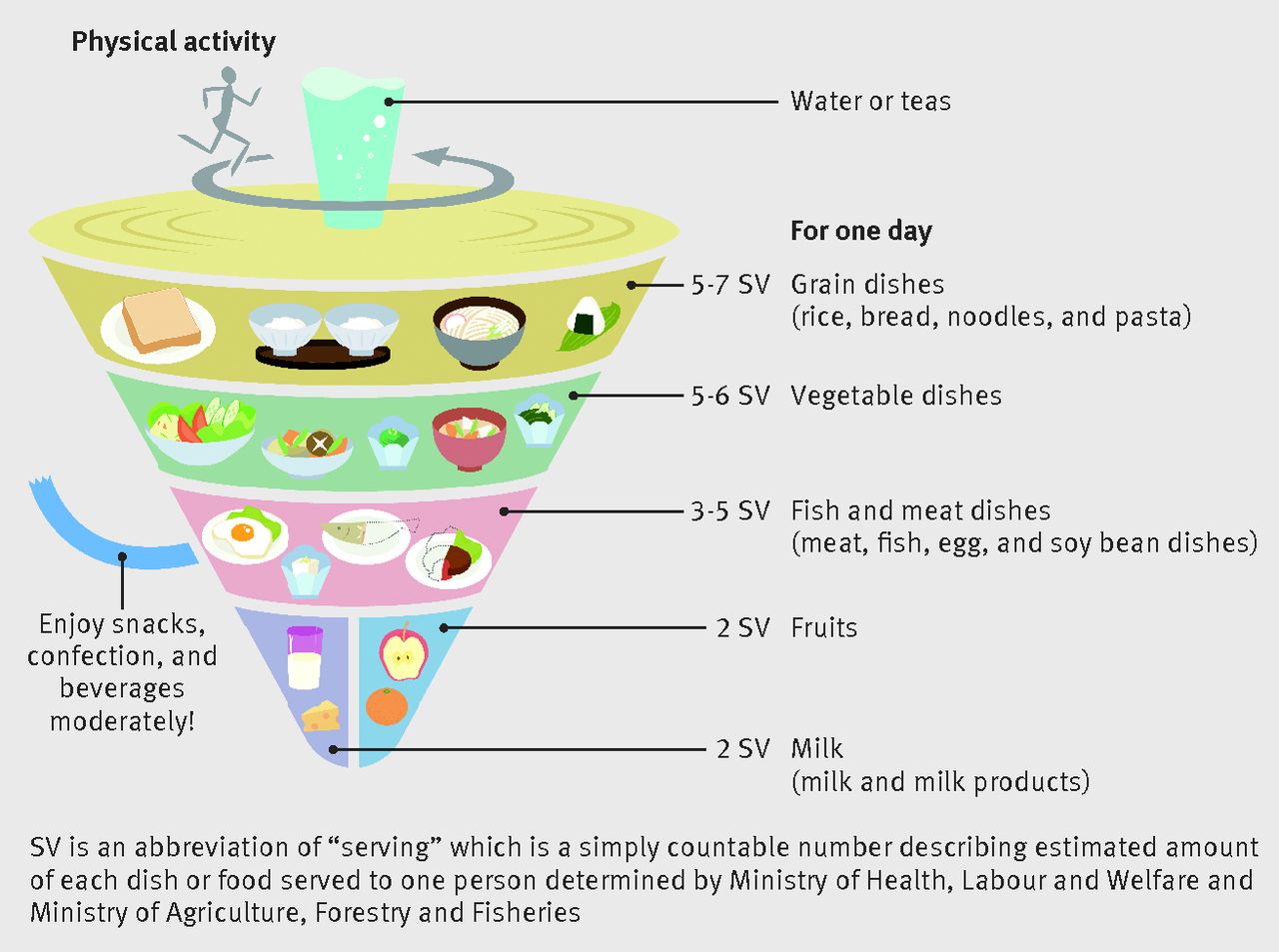
 An open letter signed by almost 200 Canadian physicians has been sent to federal Health Minister Jane Philpott urging the federal government to make substantial upgrades to the Canada Food Guide. They say the Canada Food Guide has serious problems.
An open letter signed by almost 200 Canadian physicians has been sent to federal Health Minister Jane Philpott urging the federal government to make substantial upgrades to the Canada Food Guide. They say the Canada Food Guide has serious problems.
The letter calls on the government to quit endorsing a “low-fat” diet, an approach which its detractors say has in fact contributed to more health problems, and instead that it promote the benefits of a low-carbohydrate, whole food diet involving the regular consumption of saturated fats.
“For the past 35+ years, Canadians have been urged to follow the Canadian Dietary Guidelines,” say the letter’s signatories. “During this time, there has been a sharp increase in nutrition-related diseases, particularly obesity and diabetes.”
In addition to an about-face on both fat and carbs, the physicians want the government to stop suggesting to Canadians that weight issues can be managed simply by cutting back on calories, that it acknowledge the dangers of high-salt foods and that there be a cap put on the amount of sugar added to food products, recommending that added sugar represent no more than five per cent of total calories.
The group calls for the Guide’s revisions be made “without the influence of the food industry” and that they be based on rigorous scientific evidence. “[This] will significantly reduce the burden of dietary diseases in coming years and vastly impact the amount of health care dollars spent on these diseases,” say the letter’s signatories.
The letter comes just as Health Canada closes its initial round of public consultations on revising Canada’s Food Guide. Last reviewed in 2007, the government conducted a preliminary review from 2013 to 2015 which determined that the Food Guide is in need of updating so as to make the language less confusing on topics like food serving sizes and to make the format more suitable to a range of uses. At the same time, the government denied that there is need for substantial changes to the guide, saying that “the scientific basis for the 2007 guide is largely consistent with the latest diet and health evidence.”
Not nearly the case, say the Guide’s detractors, who include a Senate committee on obesity which earlier this year produced a scathing critique. The Senate report declared an obesity crisis in Canada and directly implicated the Food Guide, calling it “no longer effective” in providing nutritional advice to Canadians.
What are the problems with the Canada Food Guide?
Another critic says that Canada’s national food guidelines, which currently tell Canadians to eat six to eight servings of grain products every day and that they limit their intake of saturated fat, are a prime force in causing drastic health problems. Science journalist Nina Teicholz, one of the witnesses who testified for the Senate committee on obesity, says, “Canadians have, on the whole, followed their food guidelines. Everything that’s supposed to be up is up and everything that’s supposed to be down is down. The evidence shows the public has complied and has got fatter and sicker,” said Teicholz in conversation with Postmedia.
The letter to the Honourable Jane Philpott was initiated by Drs. Barbra Allen Bradshaw and Carol Loffelmann and is accompanied by an online petition currently showing 315 supporters.
But the real problem with the Canada Food Guide, at least according to one recent research paper, is the supposed presence of special interest groups in its development.
“Canada’s Food Guide, far from being a benign health promotion tool, has long sparked controversy for including industry representatives in its development, as well as being criticized for potentially contributing to, rather than preventing, obesity,” argues a 2018 study called “Are we really “eating well with Canada’s food guide”? “Nonetheless, according to various media sources Canada’s Food Guide is the most sought Government document after income tax forms. However, despite its long-standing presence in Canadian society, and it’s apparent popularity, there has not been much research into its usefulness to Canadians, or effectiveness in modifying their diets. That which has been conducted has mainly been on small to modest numbers of participants. Assessing the impact of Canada’s Food Guide at a population-level is warranted to inform nutrition programs and policies which are based on the Food Guide and its principles.”
Which country has the best food guide?
So what should we be doing instead?
One writer says we should be imitating Brazil. Julia Belluz, writing for Vox, says we have a “punitive approach to food”, or at least The United States does. She argues that Brazil has the best nutritional guidelines in the world. She says the 143-page guide can be summed up by its “Golden Rule”, which is a mere paragraph.
“Always prefer natural or minimally processed foods and freshly made dishes and meals to ultra-processed foods,” it reads. “In other words, opt for water, milk, and fruits instead of soft drinks, dairy drinks, and biscuits, do not replace freshly prepared dishes (broth, soups, salads, sauces, rice and beans, pasta, steamed vegetables, pies) with products that do not require culinary preparation (packaged soups, instant noodles, pre-prepared frozen dishes, sandwiches, cold cuts and sausages, industrialised sauces, ready-mixes for cakes), and stick to homemade desserts, avoiding industrialised ones.”
Pretty straight forward. But as Belluz points out, Brazil only recently entered the world of major industrialized nations and only got universal healthcare in the 1980’s. What about places in which health has been at a premium for centuries? Well, there’s actually a name for that and it’s called “Blue Zones.”
What are “Blue Zones?”
There are five places on the planet where people live longer, healthier lives than anywhere else. They are, in no particular order, Sardinia, Italy, Nicoya Peninsula, Costa Rica, Loma Linda, California, Ikaria, Greece; and Okinawa, Japan. What do these places have in common? Researchers say things like political stability, access to healthcare and sanitation are the table stakes that all these places share. Then, there is the undeniable fact that most of these places are warmer climates. They are also on or near the ocean.

Why is the Japanese diet the best in the world?
The Japanese diet is perhaps the most revered in the world as life expectancy there is tops on the planet. Japan does have a food guide, playfully shaped like a spinning top. The difference between Japan’s guide, which was developed in 2000, is that it focuses not on individual items but on dishes.
“The dish-based method is not only easily understood by those who prepare meals but also by those who eat them,” explains the article accompanying the guide, entitled “A New Food Guide in Japan: The Japanese Food Guide Spinning Top“. “It is expressed in terms of actual dishes eaten at the table rather than the foods selected or used in meal preparation. This makes it readily understandable even for those who rarely cook. This dish-based approach offers advantages to both those cooking the food and those eating it. It is difficult to classify and organize dishes precisely, which may make this method difficult to understand. Therefore, we tried to simplify the guide as much as possible. Each method has its own advantages and disadvantages and the correct one should be selected based on the intended use.”
But what are the differences between the Canada Food Guide and Japan’s? Or, more to the point, what are the differences between the way people actually eat there vs. here? In short, more soy products. Less sugar. Fewer processed foods. More fish. Less red meat. Plus, the Japanese consume some superfoods that are virtually unheard of here, such as natto, which is made from fermented soybeans and may be the single biggest reason why the Japanese have much better cardiac health than we do. Then there are the things some are catching onto over here, such as Green tea, miso and seaweed, whose consumption is regular in Japan. More than anything, we are simply eating to much of everything here in Canada, obesity remains rare in Japan.
As BBC Good Food points out, the Japanese diet works in part because people in Japan have actually eaten this way and continue to eat this way. If the Canada Food Guide is aspirational (for example, fewer than ten per cent of us are eating the recommended daily allowance of vegetables) then the Japan Food Guide is more like a record of what its population is actually eating.
“Okinawa, in southernmost Japan, has the highest number of centenarians in the world as well as the lowest risk of age-related diseases (for example diabetes, cancer, arthritis and Alzheimer’s),” notes writer and nutritionist Nicola Shubrook in a piece called “Why is the Japanese diet so healthy?” “This has partly been attributed to their traditional Japanese diet, which is low in calories and saturated fat yet high in nutrients, especially phytonutrients such as antioxidants and flavonoids, found in different coloured vegetables. This also includes phytoestrogens, or plant-based oestrogens, that may help protect against hormone-dependent cancers, such as breast cancer. The diet of the Okinawan people has been little influenced by the dietary changes influenced by western culture, which have been seen in more urban Japan.”
There is also a greater problem afoot. UNICEF, in a 2017 report, ranked Canada number 37 out of 41 high income countries when it came to providing access to nutritious food to its children.
Comment
One thought on “Is the Canada Food Guide making us sick?”
Leave a Reply
You must be logged in to post a comment.




 Share
Share Tweet
Tweet Share
Share




old sui